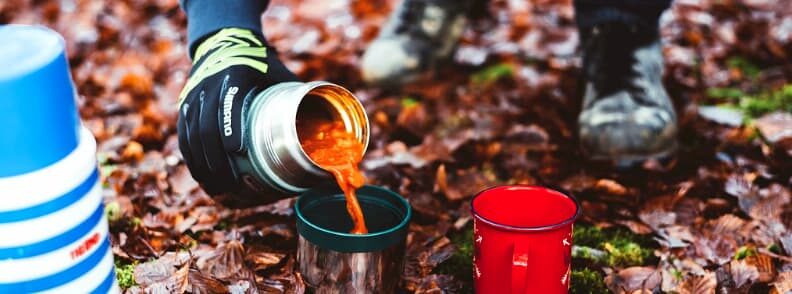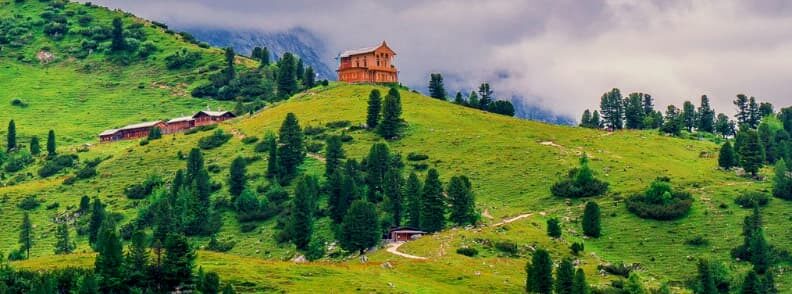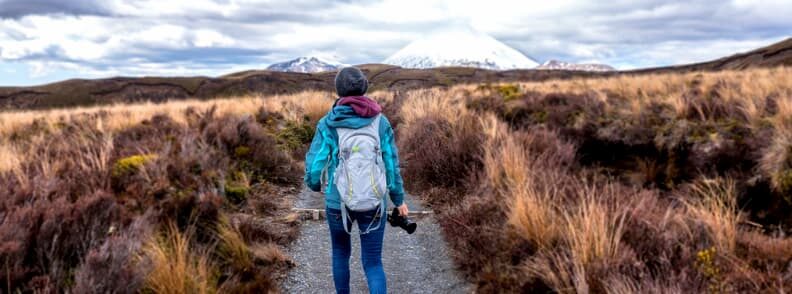Living in the moment is what humans are born to do. So the next time you’re going on a holiday adventure with your best buddies, try something new. Like backpacking in the mountains.
Whether you are an adventurous crew down to the core or only uncovering your love for such activities, then a mountain safari trip is a great choice for you.
While it may be daunting at first, you should be just fine if you have ample knowledge about what you need to bring and how to go about planning your trip.
Why is it called backpacking?
Exploring new places while carrying a backpack as your main form of baggage is known as backpacking. According to legend, the phrase backpacking first appeared in the United States in the 1910s and 1920s, when individuals began to explore the great outdoors with simple, lightweight gear.
The term backpacking refers to the practice of carrying all of one’s stuff on one’s back while wearing a backpack. This made them more adaptable and mobile, allowing people to go on foot or use public transportation to see new places. Compared to conventional trunks or luggage, which were sometimes large and difficult to transport, the backpack was a more useful option.
According to some, the name backpacking originates from the Appalachian Trail in the eastern United States, when hikers used packs known as rucksacks to transport their equipment. Backpacking is the name for the activity of carrying a pack on one’s back after the word rucksack was shortened to pack over time.
Some people think the term backpacking came from soldiers who would carry everything they needed while on lengthy marches on their backs. Outdoor enthusiasts who wished to explore new places on foot without the restrictions of conventional luggage quickly adopted this habit of backpacking.
Backpacking has come to represent a certain kind of travel that emphasizes independence, adventure, and a genuine method to get to know other cultures. Hostels and campgrounds are popular accommodation choices among backpackers because they provide an opportunity to meet fellow travelers and appreciate a more localized and community-focused style of travel. Backpackers also favor affordable options since they are frugal people, which might range from inexpensive lodging to budget meals and affordable activities.
Many people have adopted backpacking as a lifestyle choice to benefit from the freedom and adventure it offers, rather than just as a mode of holding and transporting their belongings. Backpackers gain the flexibility and impulsive nature they seek by packing all their essentials into their backpacks, which allows them to travel to new locations without being constrained by traditional luggage. Backpacking is a fantastic kind of travel for individuals who value the possibility of spontaneity and adaptation.
What is the difference between trekking and backpacking?
Despite the obvious similarities between trekking and backpacking, there are several key distinctions between the two.
Trekking is a broad term for a multi-day, long-distance trek that entails following a predetermined track or itinerary. Treks often need extensive planning and preparation and can take place on recognized hiking paths or in remote wilderness locations. Trekkers may have a daypack with the necessities like water, food, and a map, but they frequently use porters or pack animals to carry their equipment.
On the other hand, backpacking is a type of autonomous travel that entails carrying all of your kits while you explore new places. A few days to many months can be spent on a backpacking trip, and it may include camping, hostel stays, or other inexpensive lodgings. Backpackers frequently venture off the main path and place a high value on independence and adaptability.
In conclusion, although trekking is traveling along a predetermined course or itinerary for several days, backpacking is an autonomous mode of transportation that prioritizes independence, exploration, and adaptability. These hobbies offer exceptional chances to interact with nature and discover foreign cultures, and they may be tremendously gratifying.
What to bring when backpacking in the mountains
When hiking, it is important to remember to pack light. To achieve this, you should know which items are necessary when backpacking in the mountains. Also, knowing the different types of material can reduce your bag’s weight significantly.

1. The right clothes
Since you are going to a higher place, there is a good chance that the temperature will be a lot colder than at the base of the mountain. Because of this, you need to have multiple layers of clothing to protect you from the weather. The bottom line is to wear something that you usually use during winter when you’re backpacking in the mountains at high altitudes.
But since you will be exerting effort, you may get a bit sweaty from the climb. This is why you need to have a base layer that is made from wool fabric to wick the moisture away. From there, you can add extra warm clothing and something waterproof on the outermost layer of your ensemble. That way, you’ll make sure you don’t get cold during the climb.
You should also wear a winter hat that can be slipped on while you hike. Bring other necessary accessories like a visor to protect your eyes from sweat and the sun, too. You should also break in your hiking boots (the lighter, the better) before you go backpacking in the mountains to ensure that you are comfortable during the climb.

2. Enough provisions
The effort from climbing is greater than passing through flat ground. This is why it is important that you have enough provisions that can give you the energy you need. The trick is to choose the food and water containers you will be bringing carefully.
As mentioned earlier, the items you bring should be made from lighter material when you go backpacking in the mountains. Remember to keep this in mind when choosing a water container. As for the food, you should eat nutrient-dense food bars. Bring a few more on your way up in case you get hungry.
If you’re staying longer in the mountains and camping out, make sure to have a portable stove with you. Also, add something more filling that you can heat up while backpacking in the mountains. This will also help you relish the moment you have with nature, albeit amidst a wintry cold climate.

3. The proper tools and gear
Many newbie hikers have no idea what types of gear they should bring, which is why they often over-pack. Since you’ll be going in a group, plan which items you need with your companions and distribute the weight evenly. Of course, you may need individual items each of you can use on your way up.
One of the must-haves that each hiker should bring is a hiking pole. This is a pole to help hikers climb the steeper parts of the mountain without too much effort. Hiking poles are particularly useful for getting a steady footing on rocky terrain or loose sand.
It’s crucial to include navigational aids like a compass, map, or GPS gadget when backpacking in the mountains. If you’re hiking in an unknown region, the paths might be challenging and it’s simple to become lost. Learn how to read a map and use a compass as well so you can find your way across the mountains if your GPS goes out.
5. First-aid kit
It’s wise to pack a first-aid kit since accidents might happen. Basic supplies including bandages, gauze, antiseptic wipes, painkillers, and insect repellant should be included. Bring additional medications and let your trekking partners know about any medical concerns you may have.
6. Shelter
It’s important to pack a dependable shelter because the weather in the highlands may be erratic. Depending on your desire, you can bring a tent, tarp, or bivy bag. Be sure you pick a shelter that can shield you from the weather, is lightweight, and is simple to raise.
7. Hygiene items
You must use good hygiene when backpacking in the mountains to prevent becoming sick. To routinely clean yourself, bring a small towel, hand sanitizer, and wet wipes. Bring a small bar or bottle of biodegradable detergent as well so you may wash your clothes and dishes on the fly.
8. Emergency whistle and light
On top of all this, each hiker should also have an emergency pack. This should contain an emergency whistle and light to alert authorities should you need rescuing.
You can call for assistance in an emergency by blowing an emergency whistle. Bring a headlamp or flashlight with additional batteries as well so you can see and be noticed in dimly lit areas.
How to go backpacking: 5 tips for newbie backpackers
Aside from knowing what you should bring, it is also good to have an idea of how best to prepare for your backpacking trip to the mountains.
If this is your first time doing this activity, you should consider following these five tips that can help even newbies enjoy backpacking to the mountains:

1. Do your research on the place
Learning about where you are going can help you acclimatize to the place before you even get there. This is also a critical part of the planning process where you can take note of some specific details like the culture, geography, and tourism so you can enjoy your hike up the mountains.

2. Book a great place to stay for the night
Experts in backpacking often camp out when they reach the peak, but as a newbie, it is recommended that you book a place where you can spend the night. Most popular destinations have hotels and lodges where explorers can stay in comfort while enjoying the unique experience, so you shouldn’t have any trouble looking for one.

3. Hire an expert backpacking guide
Having an expert in the place guiding you through the hike is a good decision for newbie backpackers. While it may cost more, it will be worth it. Not only will this help you avoid getting lost, but it will also help you focus on enjoying the experience without worrying too much about where to go and what to do next.
Aside from that, you can make the most out of the experience since you have someone to ask and to help you avoid trouble when there is wildlife in the area.

4. Choose an easy itinerary
There are tons of holiday tours and packages you can choose from, but you can always opt for one with an easy itinerary when backpacking with your crew for the very first time. These tours vary in difficulty, depending on the mountain you’re going to climb. Some peaks can also be reached via several trails.
Aside from searching on Google for the easiest trail, you may also seek comments and suggestions from others who have hiked or climbed the mountain you are eyeing for your backpacking trip. This will give you more personal insights into the experience and help you decide if it’s the right one for you.

5. Plan around the weather
Since you will also need to consider the altitude when backpacking to the mountains, you should always plan your trip with the weather in mind. This can be done with a simple Google search, but some tour operators also offer advance notice when the weather is not very suitable for a climb.
Even so, make sure to check the forecast yourself. This way, you can pack the appropriate gear and clothing based on the temperature and climate. Also, remember that the local weather reports often only offer a general forecast of the weather for a day, so always bring clothing and tools you may need for when the weather changes.
Always follow the Leave No Trace guidelines when you walk and camp, which includes limiting your influence on the ecosystem and leaving the natural area as you found it.

Ready to pack your bags?
Backpacking to the mountains for the very first time can be daunting if you have no idea what to do and bring during the trip. Make sure to do enough research and plan your trip thoroughly with your buddies to make the most out of the one-of-a-kind high-altitude hiking experience.
Furthermore, always prioritize your safety when backpacking in the mountains. While planning a hike, be careful to let someone know your itinerary, anticipated return date, and emergency contacts. Before your travel, be sure to check the weather prediction as well, and be ready for any changes. Enjoy your hike!

Hafiz Umer Ali Zaib is the Social Media Specialist at Luxury Tours, a leading provider of tours, cruises, and safaris across the UAE. The company’s top offerings include the Dubai Desert Evening Safari, City Tours, Dhow Cruises, Mountain Tours, Limousine Service, Discounted Tickets for theme parks, and a variety of other excursions.
You too can become a guest blogger on The Travel Bunny. Just submit a free guest post.
Now that you know how to do backpacking, you might also enjoy reading
Travel checklist for your hiking backpack
What camping supplies do I need?
The best backpacking in California

